Storm Right
Flat Roof
Storm Right
What is a flat roof?
A flat roof is a roof that is almost, or completely even. Although flat roofs are termed as being ‘flat’ – these roofs are laid with a fall that makes sure rainwater can drain off the lower side effectively. Flat roofs are designed to have a minimum fall of 1:40 which results in a 1:80 fall once construction is finished.
Flat roofs are defined as roofs where the slope does not exceed 10 degrees from the horizontal. They are very often seen as a cheaper alternative to pitched roofing. However, the longevity of this roof type is far less than that of a pitched roof and lasts between 6 and 35 years – dependent on the quality of the roof covering and the structure/construction.
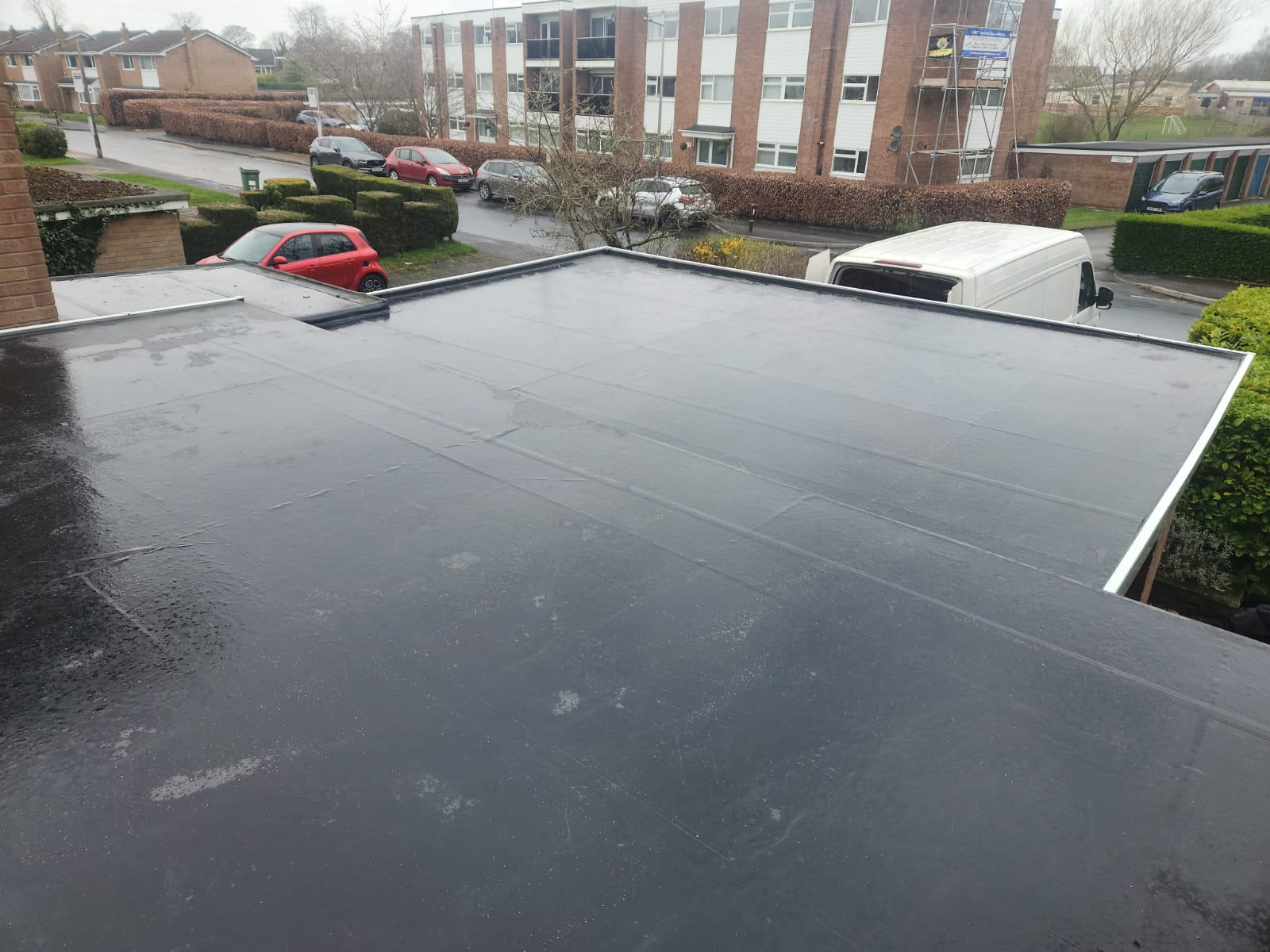
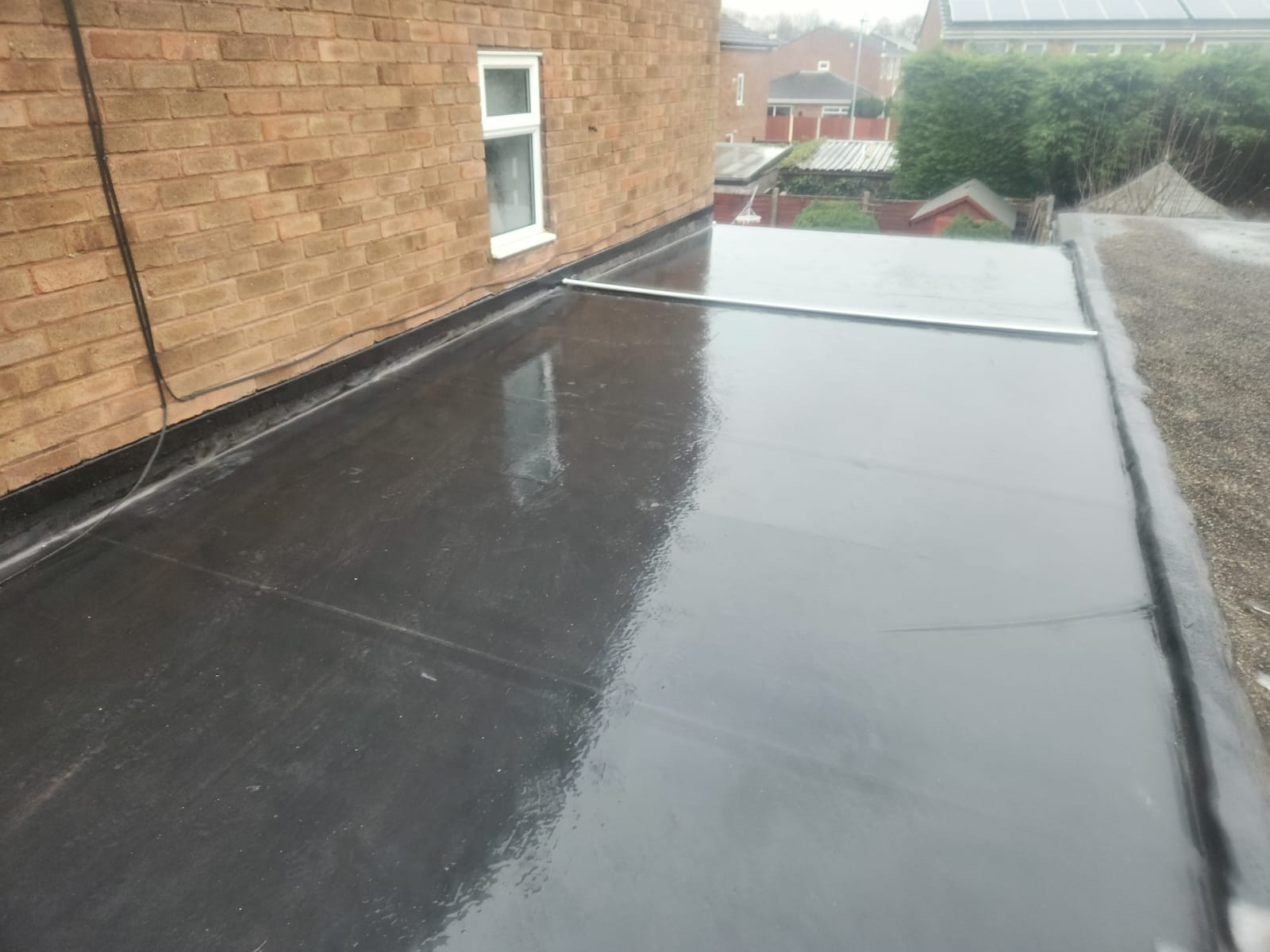
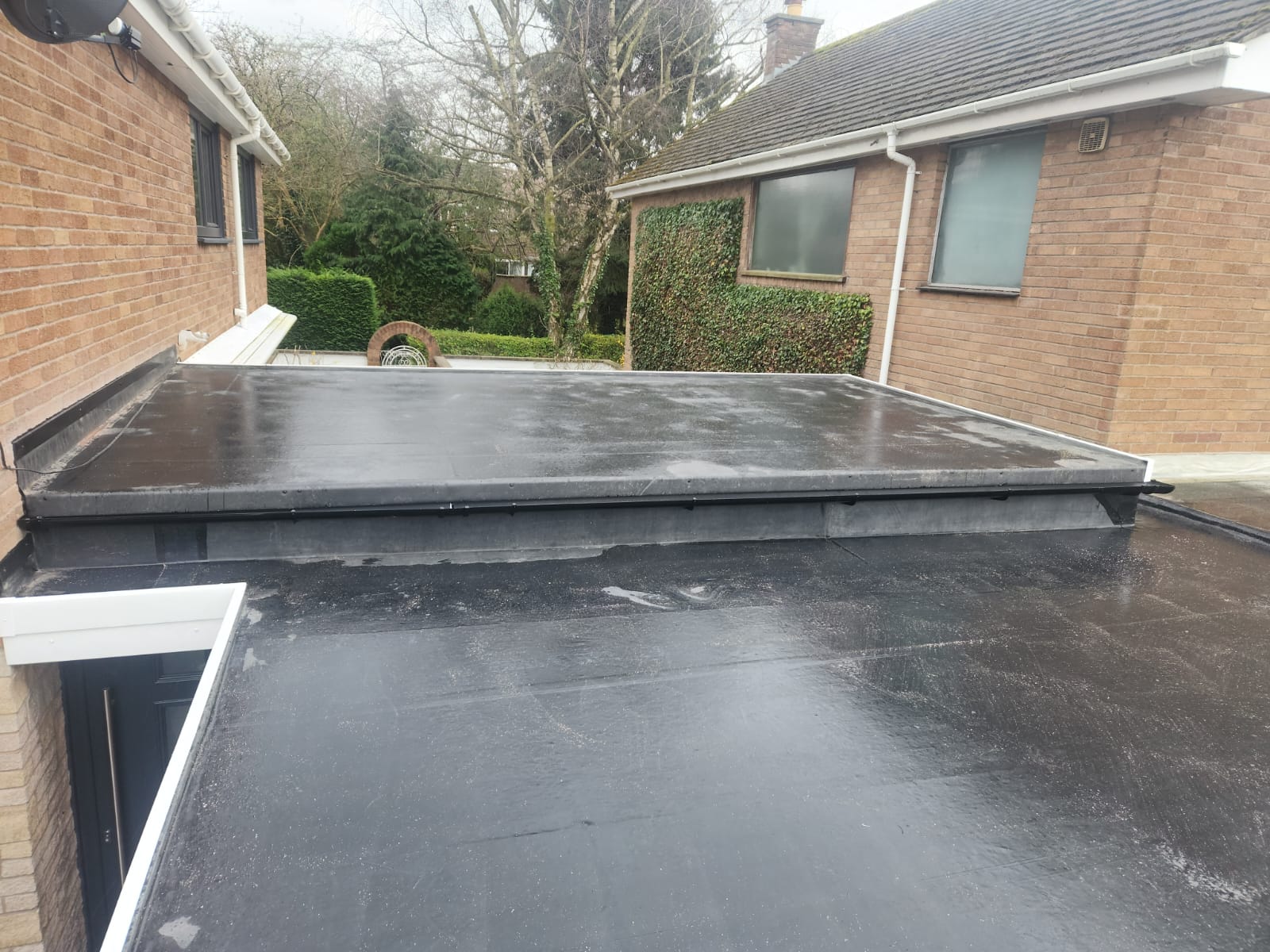
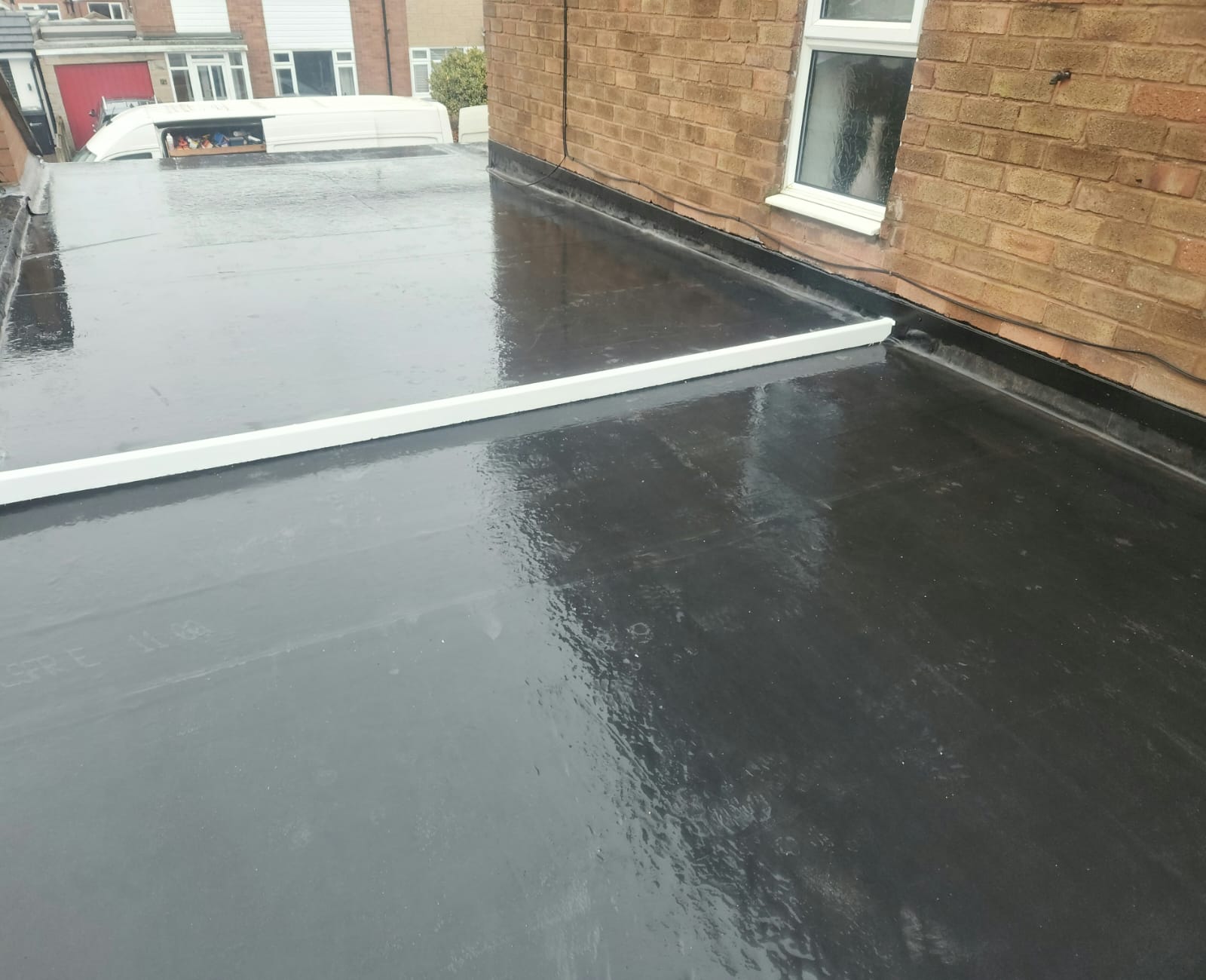
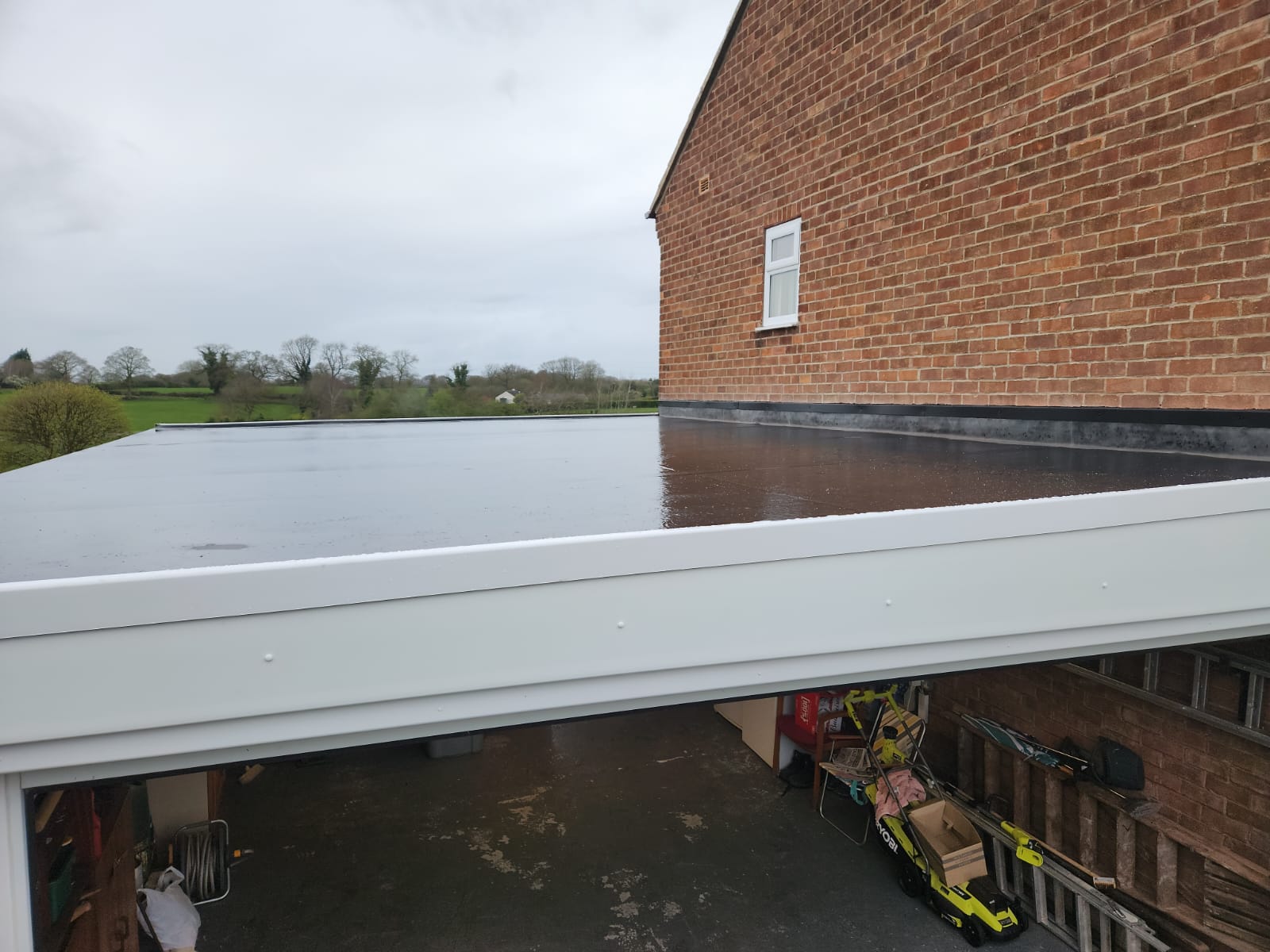
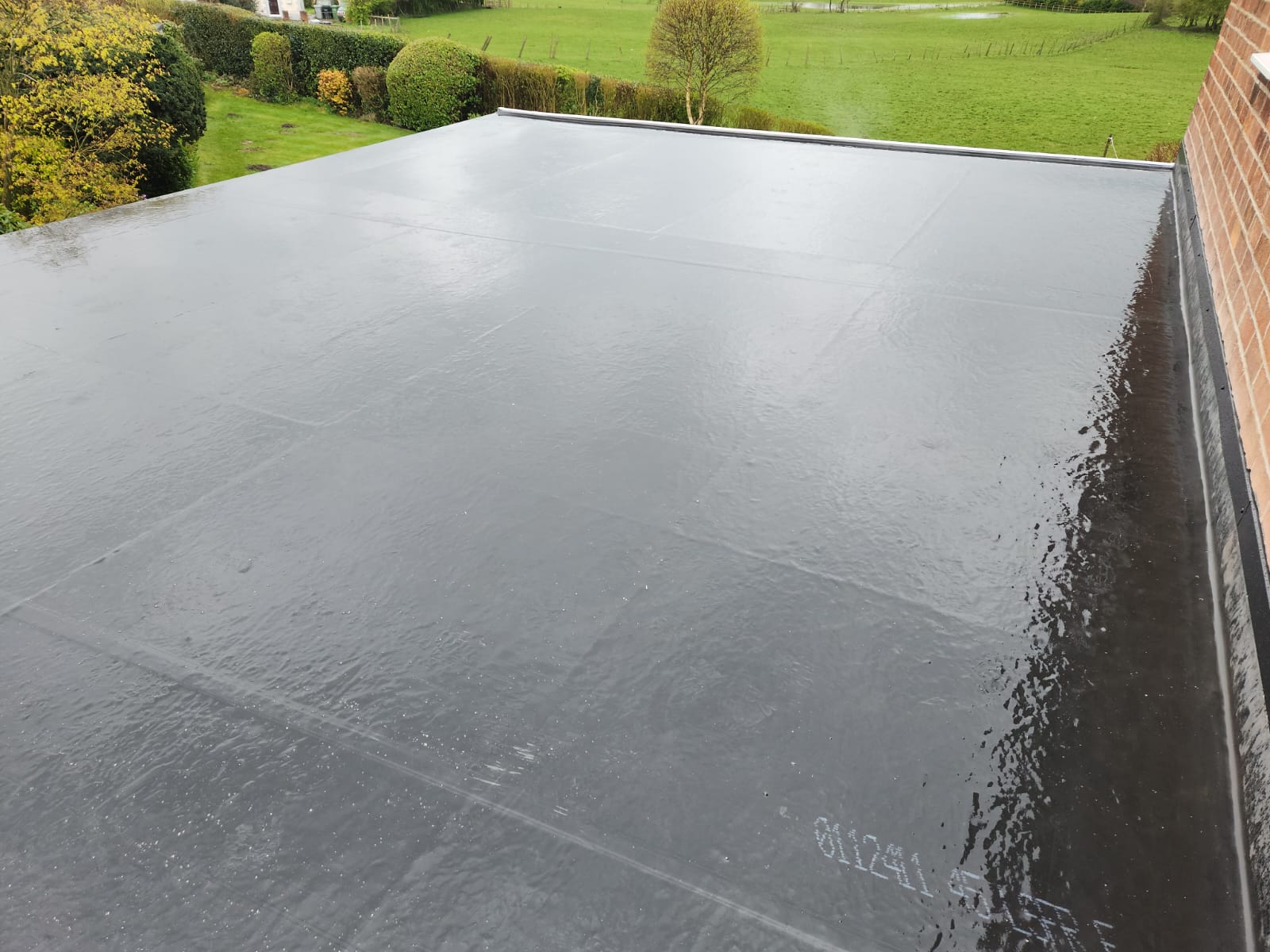
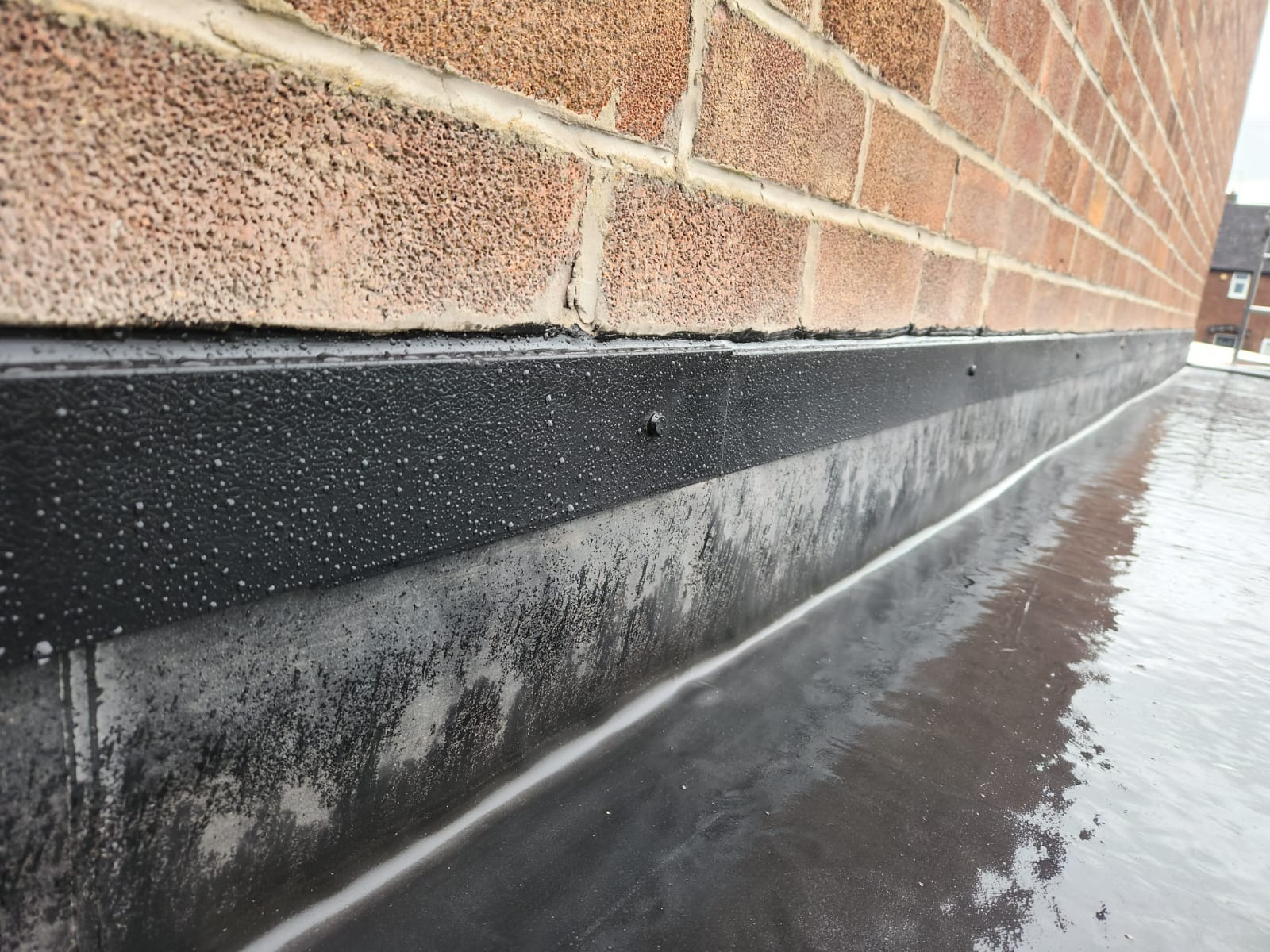
Storm Right
Types of flat roof
There are typically two types of flat roof you can have installed:
- Concrete slab flat room
- Timber/plywood flat roof
The actual structural substrate of the flat roof is called a ‘deck’. The deck should be capable of supporting static and dynamic design loads. This deck should be strong and be able to provide adequate support to any roof covering system and insulation boarding without issue.
Materials used for the roof deck should be moisture resistant – usually made from timber or plywood although concrete or profiled metal can also be used. The deck should be clean, dry and primed prior to laying insulation to ensure optimal adhesion.
Storm Right
What issues could I encounter with a flat roof?
Flat roofs generally require a greater degree of maintenance – even more so if the surface is disturbed and damaged by people frequently walking over it. Flat roof drainage is historically not as effective as traditional pitched roofs and standing water (ponding) can be an issue if falls are not adequate.
Flat roofs do require more maintenance than a traditional pitched roof. This can happen even more so when the surface is damaged when people may walk over it. The drainage of a flat roof is not as effective as a traditional pitched roof and ponding can be a problem if the gradient of the roof is sufficient.
The most common issues that you may encounter are:
- Alligatoring – The main sign that your flat roof needs replacing is alligatoring. Alligatoring is when the asphalt that is used to build your flat roof has lost its elasticity which causes it to crack and bubble much like the skin of an alligator.
- Leaks and moisture – The most common problem with flat roofs is leaks and moisture. These are issues that can be dealt with effectively if kept on top of. As the roof is flat, the water doesn’t have anywhere other than directly downwards. This means that any moisture may go into the roof itself and cause you further issues such as mould and fungus.
- Pooling water – Your flat roof may over time shift which means that it may not be as flat as when it was installed. This could cause water to pool in any divots or dips. Most materials are manufactured to hold up water. If you allow pooling on your flat roof, it is likely to deteriorate the exterior form of the roof which will shorten its life span.
Benefits of a flat roof
- Easy installation
- Low installation costs
- Heating and cooling advantages
- Extra space
Traditionally flat roofs are not as visually striking as pitched roofs when building your new home or replacing your roof, but they do come with their advantages. These advantages can help you make the right choice when it comes to your roof.
Flat roofs are generally cheaper to install than a traditional pitched roof. The repairs are also much cheaper. The space that can be offered with a flat roof is far more versatile than a pitched roof and you can turn this space into an extra living space should you want to. Additional to this, the best feature of flat roofs is well known for being able to keep your homes utility costs down. Pitched roofs often trap the warmer air within the eaves or allow the cooler air to escape.
- 20-year warranty and 50-year life expectancy
- Firestone RubberCover EPDM 1 sheet seamless application
- Minimum disruption and mess during installation
- The ideal solution for any size residential application
If you are experiencing flat roof problems, the Firestone RubberCover System offers a unique combination of features and benefits which have been demonstrated on hundreds of thousands of exposed roofs around the world.
Storm Right
What is Firestone RubberCover EPDM Membrane?
Firestone RubberCover EPDM is a 100% cured single-ply roofing membrane made of a synthetic rubber Ethylene-Propylene-Diene Terpolymer. Since 1980, more than 1.000.000.000 m² of Firestone EPDM membranes have been successfully installed on commercial, industrial and residential roofs worldwide.
Storm Right
Why choose us?
Should you decide to use StormRight to repair and replace your flat roof, you can guarantee that the job will be done efficiently and professionally. We will take into consideration your every need at every point of our evaluation and construction.
We offer free consultations and evaluations for your roofing needs. So, if you have further questions about your flat roof, make sure you contact us today. Fill in the form below or head over to our contact us page and fill in your details. We aim to answer all questions and queries within 48 hours.